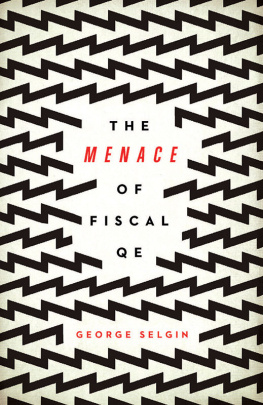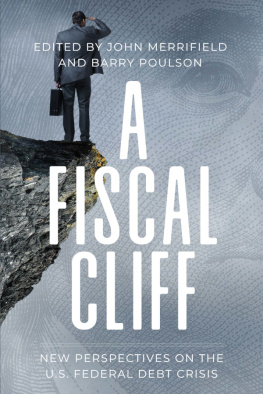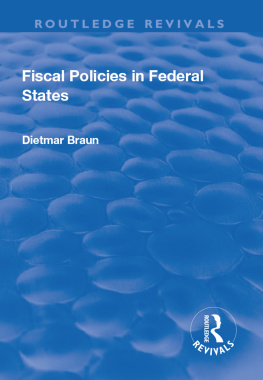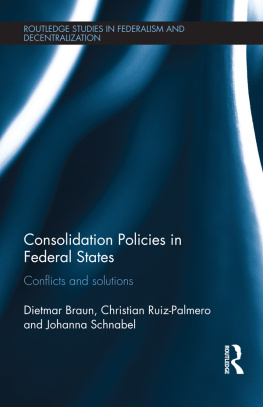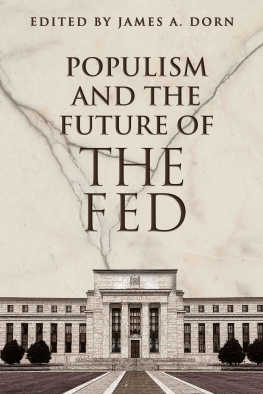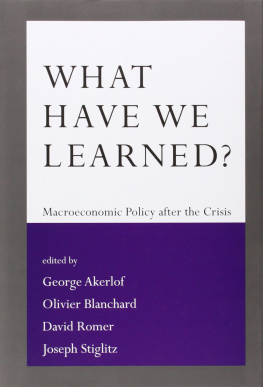George Selgin is one of the leading thinkers on financial and monetary policy in the United States. One need not agree with all, many, or even any of his conclusions to benefit from his deep knowledge of his subjects. His critique of fiscal quantitative easing is no different: a fascinating critical overview of an idea that is gaining traction left, right, and center.
PETER CONTI-BROWN, author of The Power and Independence of the Federal Reserve
Selgin supports his arguments against fiscal exploitation of the central banks balance sheet with rich historical evidence and clear economic analysis. As an antidote to fiscal QE, Selgin proposes a corridor framework for monetary policy. This is a must read for anyone making or analyzing monetary policy.
DARRELL DUFFIE, Dean Witter Distinguished Professor of Finance at Stanford Graduate School of Business
The dividing line between elected fiscal policymakers and unelected central bankers matters hugely to maintaining a healthy democratic republic. George Selgins wide-ranging and deep analysis and proposals for how the lines could be redrawn for todays unexpected economic environment deserve wide attention and debate.
SIR PAUL TUCKER, former Deputy Governor of the Bank of England and author of Unelected Power: The Quest for Legitimacy in Central Banking and the Regulatory State
The current floor system of money market management in the USA allows the size of the Feds balance sheet to be divorced from its mandate to control inflation. This opens the way for some, usually on the political left, to advocate using the Central Banks balance sheet to fund all kinds of (idealistic) expenditures, quasi-fiscal quantitative easing, thereby avoiding the need for legislative approval and often (mistakenly) perceived as a free lunch. George Selgin advocates a return to a corridor system of money management to avert such dangers.
CHARLES GOODHART, Emeritus Professor, London School of Economics Financial Markets Group
While monetary and fiscal policy can be coordinated and conscious of one another, conflating the two would be perilousfor our economy and our democracy. In The Menace of Fiscal QE , George Selgin explains why. You should read and heed his warning.
PETER R. FISHER, Tuck School of Business at Dartmouth, former Under Secretary of the U.S. Treasury
George Selgin has provided us with an excellent guide to understanding the risks of the Feds use of Quantitative Easing or QE. It shows how unconventional monetary policies during the crisis have paved the way for fiscal abuse of our central banks balance sheet. I highly recommended it for anyone with a serious interest in the appropriate interactions of monetary and fiscal policy.
Charles Plosser, former President and CEO, Federal Reserve Bank of Philadelphia
Copyright 2020 by the Cato Institute.
All rights reserved.
ISBN: 978-1-948647-93-9
eISBN: 978-1-948647-94-6
Cover design by Amanda Hudson, Faceout Studio.
Cover imagery from Shutterstock.
Library of Congress Cataloging-in-Publication Data available.
Printed in the United States of America.
Cato Institute
1000 Massachusetts Avenue NW
Washington, DC 20001
www.cato.org
Im grateful to Darrell Duffie, Andrew Filardo, Peter Fisher, Charles Goodhart, Norbert Michel, Alex Pollock, Charles Plosser, Manmohan Singh, Peter Stella, Nathan Tankus, and Paul Tucker for their valuable suggestions; to Nick Anthony, Nikhil Sridhar, and Tyler Whirty for superb research assistance; and to Thomas Firey, Amanda Griffiths, Jason Kuznicki, and Eleanor OConnor for editorial assistance.
TABLE OF CONTENTS
For some time now, President Donald Trump has been blaming the Federal Reserve for over-tightening monetary policy and calling for it to lower interest rates. But last April he added a new twist to his importuning: a tweet calling not just for lower rates but also for more quantitative easing to help send the U.S. economy up like a rocket ().
Although the presidents remark was just another instance of his trademark bluster, it happened to coincide with a serious and growing movement to have the Fed and other central banks employ their quantitative easing powers for purposes other than fighting recessions. This movement, favoring what Ill call fiscal quantitative easing, or fiscal QE, is becoming increasingly popular, and it threatens to erode a valuable division of powers traditionally employed in the modern administrative state. Should the movement continue to grow, and should central banks eventually succumb to it, the consequences are likely to be ones both the general public and central bankers themselves will have reason to regret. Besides fiscal profligacy and a further erosion of central banks already limited independence, those consequences could also include unwanted inflation and increased central bank and private-sector risk taking.
My specific concern is with the threat that demands for fiscal QE pose to the Federal Reserve and U.S. citizens. I begin by discussing the relationship between conventional and fiscal QE. I then review the history of the fiscal QE movement. Next, I explain how the Feds post crisis policy decisions have made it vulnerable to calls for fiscal QE. After that, I consider fiscal QEs potential consequences, showing how, notwithstanding its proponents claims, it offers no genuine fiscal advantages but is capable of doing great harm. Finally, I consider ways to make the Fed less vulnerable to calls to engage in fiscal QE. I ultimately conclude that Fed officials themselves must take the lead in protecting both the Fed and the public from attempts to abuse its quantitative easing powers. For that reason, Ive written this essay with such officials, and others directly involved in shaping Federal Reserve policy, particularly in mind.
Although I argue against quantitative easing as a means for funding government programs, my arguments shouldnt be understood to be ones against the programs themselves. Concerning the merits of any particular government undertaking, I neither venture nor intend to imply any opinion whatsoever.
) has recently used the phrase fiscal QE to refer to any central bank purchases of private rather than government debt. In contrast, I use it to refer to any large-scale central bank asset purchases undertaken not for strictly macroeconomic purposes but for the sake of either propping up particular firms or markets or funding particular government programs. I further explain my definition below.
As used here, quantitative easing (QE) refers to outright central bank asset purchases, and particularly to purchases of long-term assets, beyond those serving to accommodate secular growth in the demand for currency and bank reserves.
Because quantitative easing is generally unnecessary, and because relatively few central banks have made use of it, QE is considered a form of unconventional monetary policy. It was unheard of until the Bank of Japan first experimented with large-scale bond purchases in 2001, referring to those purchases by the Japanese equivalent ( ryteki kiny kanwa ) of quantitative easing. However, because this early Bank of Japan experiment involved purchases of short-term securities only, many do not regard it as an instance of quantitative easing in the now-accepted sense of the term. Only following the 20072008 financial crisis did other central banks resort to quantitative easing proper, starting with the Federal Reserve, which began its first of three rounds of quantitative easing at the start of 2009.
Next page
